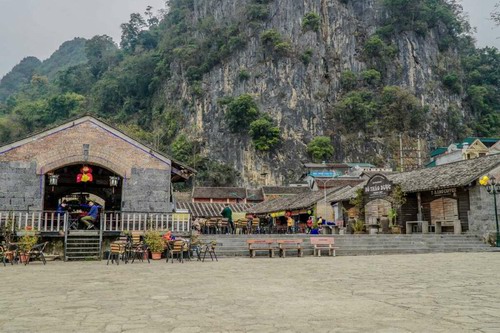|
PVT expresses a certain idea
of elegance and beauty of Vietnam, in the eyes
of the traveler remains a source of
inexhaustible curiosity.
 Indeed, this diverse country has always
fascinated many tourists with strong images
embedded in the collective imagination.
Therefore the number of cultural and natural
sites, leads us to say that Vietnam is a country
with multiple richness of its heritage and
plural in the variety of its landscapes and the
diversity of its population. Indeed, this diverse country has always
fascinated many tourists with strong images
embedded in the collective imagination.
Therefore the number of cultural and natural
sites, leads us to say that Vietnam is a country
with multiple richness of its heritage and
plural in the variety of its landscapes and the
diversity of its population.
Thus, based on our experience in the field and
our expertise, Package Vietnam Tours invites you
to experience your trip and otherwise agrees to
fulfill your dream of expatriation.
Geography of Vietnam
Vietnam stretches as S (like a long dragon) on 1
800 km from the Gulf of Tonkin to the Gulf of
Thailand and is divided into three distinct
physical regions:
- North or Tonkin, Tonkin French colonizers
- The Centre, or Trung Bo, the former Annam
- The South, or Nam Bo, former Cochinchina.
Northern part
North moved to the head of vast and S takes the
form of a conical hat. Currently in the region
are three major sub-regions: The mountains of
North East, the mountains of North West and the
Red River Delta.
The northern mountains (East and West) Upper
Tonkin, consists of provinces covered limestone
mountains compact (being the extension of the
Himalayan terrain) that share the border with
Laos and China.
The delta of the Red River, bordered to the east
and west by mountain ranges, this second rice
granary of the country after the Mekong Delta.
At the heart of the delta, there is
Hanoi, the
ancient capital of Vietnam.
Inhabited and exploited by ancient Viet people,
the North is the birthplace of the country where
identity is forged viet. The area is also
renowned for its strong cultural and natural
diversity.
Centre part
As its name suggests, the region is at the heart
of the country on a narrow strip of land
elongating from north to south, bounded on the
east by the South China Sea and to the west by
Laos and Cambodia .
Centre can converse in three sub-regions:
Northeast Centre (Thanh Hoa, Hue), the South
Centre (Da Nang to
Phan Thiet) and Highlands (Da
Lat,
Buon Me Thuot,
Kon Tum...)
Very rich perspective scenery, culture and
history, it is a region full of interest. Here
are the most developed highlights:
Cultural-heritage history: It contains
four of the five "national wonders" world
heritage of Unesco. It also reflects the
interactions between many cultures (Tonkinnoise,
Conchinchine, Indian Cham) and the glorious past
of Annam, the name given at the time of the
French.
Ethnic minorities: The Highlands is a
place inhabited by minorities Bana, Mnong, Ede,
Giarai - those known for their craft Trained
elephants for forest work.
Landscapes: A succession of coastal
plains form beautiful bays and beaches yet
untapped (Dai Lanh, Van Phong in
Nha Trang, Phan
Thiet).
The Southern part
South at the base of the dragon suffered a newer
operating other regions by the Vietnamese (dated
16th century). The South consists of two parts:
Mien Dong considered the economic heart
of the country, the region has the largest city
of the country, neighboring provinces
Saigon (Tay
Ninh, Binh Phuoc, Long An,
Vung Tau).
Mekong Delta: this region in the extreme
south, coveted for its richness provided by the
Mekong River, remains the largest rice granary
of the country. It is characterized by a dense
network of rice paddies and arroyos lined by
villages. Can be extended to Cambodia from the
Mekong Delta via its border with Cambodia.
|
 Travel Blog
Travel Blog